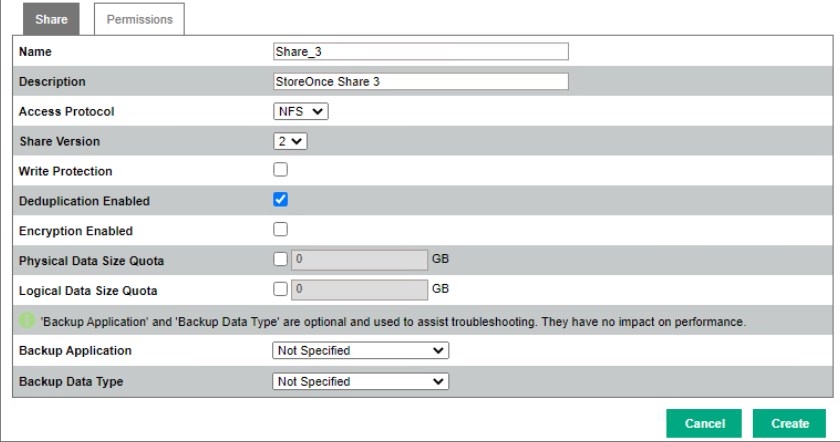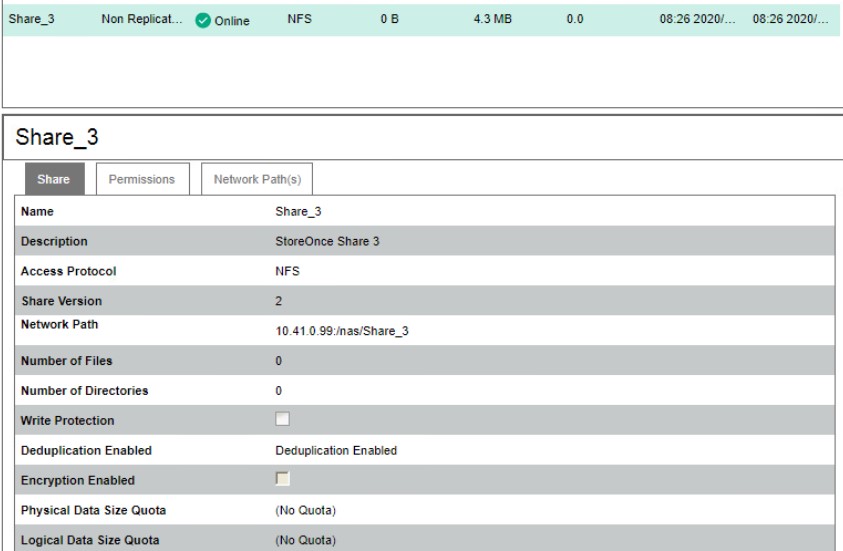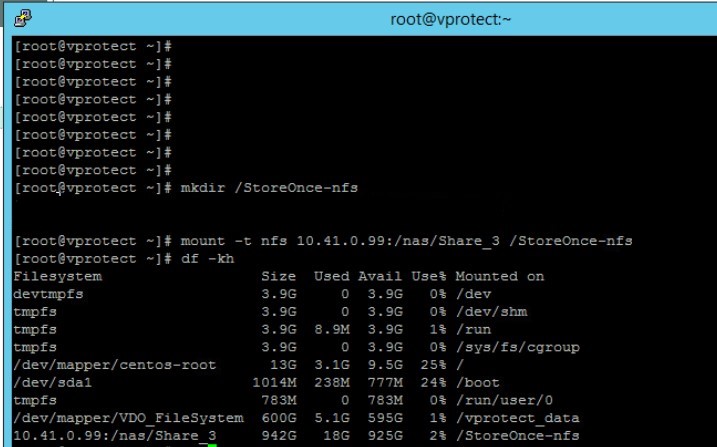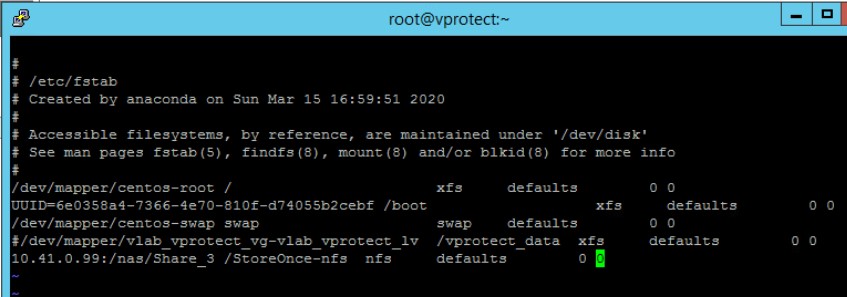HPE StoreOnce
Overview
HPE StoreOnce is another product that allows you to store backups from our vPlus application. As with other providers, here we can also use NFS share.
Example
To create NFS share from the StoreOnce dashboard, after login goes to StoreOnce -> NAS -> Shares on the left side tree menu. Next, click on the "Create" button in the top right.

Only one change is required, the rest is optional and depends on your preferences. This is the "access protocol", you must select the NFS option.

After creating it, you'll see a summary window. (remember "Network Path")

Now connect to the vPlus node host:
Create an NFS directory mount point
mkdir /directorypathMount NFS Share
mount -t nfs Storeonce_IP:/nas/sharename /mountdirectoryCheck if you are connected with NFS Share
df -kh

To permanently add NFS share, you must edit the /etc/fstab file
Storeonce_IP:/nas/sharename /mountdirectory nfs defaults 0 0

Now we can create a backup destination for our backups. Please log in to the vPlus dashboard and go to the "Backup Destination" tab on the left side menu. Then choose "File system" from the list of backup destinations you can create.

You only need to enter the unique name of the backup destination and mount point as the storage path.
